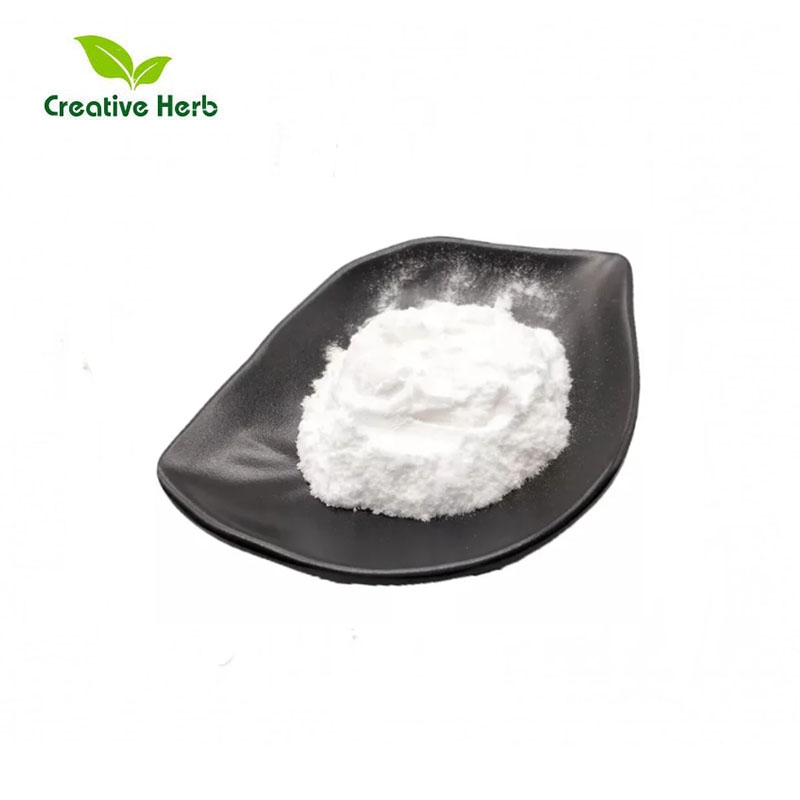New achievements of scientists in the field of antibacterial research!
-
Last Update: 2020-01-19
-
Source: Internet
-
Author: User
Search more information of high quality chemicals, good prices and reliable suppliers, visit
www.echemi.com
In this paper, the editor has collated several research results, focusing on the new progress made by scientists in the field of antibacterial research, and learning with you! Photo source: cc0 public domain [1] SCI adv: nematode nervous system regulates skin antibacterial immune response doi: 10.1126/sciadv.aaw4717 recently, a research report published in the international journal Science advance, researchers from Washington State University, through research on cryptostrongylus elegans, found the nervous system responsive bacteria for the first time Infection regulates the internal mechanism of the anti infection function of the epidermis of worms (an external barrier similar to the skin); C.elegans is usually used as a model organism in biological research, its structure is relatively simple, and it still has several genetic similarities with more complex mammals, including humans, so this discovery is also of great significance to human health Our research challenges the traditional view that physical barriers such as the cuticle of worms or human skin cannot respond to infection, but are only part of the passive defense of human body against pathogens The results show that nematodes can change their epidermal structure during infection, and the defense response is controlled by the nervous system 【2】 Science: new research reveals that human microbiome is a potential new antibacterial drug cornucopia doi: 10.1126/science.aax9176 Just as gold miners in the gold rush used to mine this shiny precious metal on the mountains of Northern California, bioprospectors are looking for new awards: potential antimicrobial molecules, and they are looking for them in the human microbiome For nearly two decades, scientists have been unveiling the mystery of these microbial communities that use the human body as their home Today, they see the human microbiome as an untapped source of molecules that could help fight infection and potentially treat other diseases In a new study, researchers from Princeton University in the United States combined bioinformatics with synthetic biology to identify bioactive molecules with similar drug functions By using their new algorithm, they were able to elucidate the DNA fingerprints of potentially effective antimicrobial molecules, and the results were recently published in the journal Science The human microbiome contains thousands of bacteria, whose composition is different in different parts of the human body and in different human bodies The human microbiome is composed of a variety of symbiotic microorganisms living in and on the surface of the human body - including huge bacterial colonies, and even beneficial viruses and fungi - which, as a part of everyone's personal ecosystem, thrive in symbiosis Although significant progress has been made in clarifying the effects of human microbiome on human health and disease in recent years, the potential molecules and mechanisms to control these effects have not been fully explored, at least so far 【3】 Cell res: new antibacterial drugs are expected to be developed! Hemagglutination factor can kill multiple drug-resistant bacteria by hydrolyzing lipopolysaccharide! Doi: 10.1038/s41422-019-0202-3 a few days ago, in a research report published in the international journal Cell Research, scientists from Sichuan University in China found that clotting factors may help to develop new therapies against multidrug-resistant bacteria Clotting factors mainly participate in the clotting process after body injury The infection caused by multidrug-resistant bacteria is an important public health risk faced by the world today However, human beings often lack drugs to resist these resistant bacteria Researchers found that the absence of coagulation factors in the blood (such as the condition often seen in hemophilia patients) is often associated with bacteria The occurrence of infectious diseases is directly related, such as pneumonia, which may indicate that coagulation factors may play a very important role in the anti infection mechanism and blood coagulation process In this study, researchers found that clotting factors VII, IX and X, which play a key role in the process of blood coagulation, may be able to effectively resist multiple drug-resistant pathogens, such as Pseudomonas aeruginosa and baumannia, all of which are selected as 12 pathogens that threaten human health by who due to antibiotic resistance The characteristics of Gram-negative bacteria are mainly manifested in their cell membrane, which is composed of an inner cell membrane and an outer cell membrane which is difficult for drugs to penetrate and kill bacteria 【4】 ELife: Drosophila's antibacterial defense system may be a potential tumor killer doi: 10.7554/elife.45061 Recently, in a research report published in the International Journal eLife, scientists from the British Cancer Research Institute found that an antibacterial agent called defensin can kill tumor cells and reduce tumor in fruit flies by destroying the labeled cells In this study, for the first time, researchers found in living animals that amps (antimicrobial peptides) can help fight against infection can help fight against cancer If the antimicrobial peptides can be proved in large animals and human bodies in the future, it is expected to help scientists develop new anti-cancer therapies in the future Previous studies have shown that amps can kill cancer cells cultured in the laboratory, but it has not been confirmed in living organisms; researcher Jean philppe Parvy pointed out that we used Drosophila melanogaster to study whether the "machines" that play a key role in identifying and eliminating harmful microorganisms can recognize and destroy malignant cells in living organisms in a similar way 【5】 Nat commun: targeting bacterial "super strong glue" protein, it is expected to develop a new antibacterial therapy doi: 10.1038/s41467-019-09814-6 Recently, an international journal Nature In the Research Report on communications, scientists from the University of La Trobe and the University of Queensland have clarified the molecular mechanism by which special proteins in bacterial outer membrane (super strong glue of bacteria) adhere to certain parts of the body and propagate continuously The relevant research results may help to develop prevention and treatment of bacteria The innovative treatment of sexual infection is also expected to promote scientists to develop new antibacterial strategies In this study, researchers focused on a protein called upab, which bacteria own that causes 50% of women to develop urinary tract infections in their lifetime Similar proteins have been found in the outer membranes of other pathogens that cause infection, including food poisoning, pertussis, meningitis, typhus and chlamydia According to researcher begona Heras, this study may help researchers develop new strategies to resist bacterial antibiotic resistance Photo source: nature, 2019, Doi: 10.1038/s41586-019-1735-9 [6] FCIM: antibacterial catheter coating helps to resist infection In a report on microbiology, researchers from Brown University developed a new antibacterial coating for intravascular catheters that could one day help prevent blood vessel related bloodstream infections These infections are a major burden on hospitals, healthcare providers and most important patients, and researchers want to develop a coating that can kill floating [free floating] bacteria and prevent bacterial colonization on the surface The initial data we collected shows that we have something very promising " Researchers have shown that polyurethane coatings can be easily applied to a variety of medical-related surfaces and gradually release a drug called ginofin, which can kill methicillin-resistant Staphylococcus aureus (MRSA) bacteria in laboratory tests for nearly a month The test also shows that the coating can prevent the formation of MRSA biofilm, once established, it is particularly resilient against microbial treatment 【7】 Nature: discovery of a new toxin to prevent the growth of bacteria, which is expected to resist the super bacteria doi: 10.1038/s41586-019-1735-9 in a new study, researchers from Massachusetts Institute of technology and McMaster University in Canada found a new bactericidal toxin: tas1, which is expected to resist the super bacterial infectious diseases Bacteria inject the growth inhibiting toxin into bacteria as competitors to gain competitive advantage, and the relevant research results have been published in the Nature journal recently Researchers have been studying how bacteria secrete antimicrobial molecules since they discovered a new toxin The toxin is an antimicrobial enzyme that scientists have never discovered After determining the molecular structure of the toxin, Whitney and Ahmad realized that it was similar to an enzyme that synthesizes a well-known bacterial signaling molecule called (P) ppGpp This signaling molecule helps bacteria survive under stress conditions, such as exposure to antibiotics, under normal circumstances The researchers say the three-dimensional structure of the toxin was initially confusing because no known toxin looked like the enzyme that makes (P) ppGpp, which itself is not a toxin 【8】 Nat commun: how to maintain the specificity of antibacterial immune response? Doi: 10.1038/s41467-017-02234-4 some types of Staphylococcus can grow in human skin and mucous membrane layer, and maintain peace with the host But other types exist in soil and water environment When our body encounters these bacteria, the immune system is activated to eliminate any possible infection But how does the immune system distinguish between harmful pathogens and harmless symbionts? Friedrich g from t ü Bingen University recently? Professor TZ's research results reveal this The researchers found that the key lies in the long-chain fatty acids linked on the surface of bacterial lipoproteins The length of fatty acids often determines the response intensity of the immune system The findings were published in nature communications; the researchers first analyzed the symbiotic bacterium Staphylococcus aureus on the surface of the human skin, and compared it with Staphylococcus in meat products The human immune system recognizes the lipoproteins on the surface of Staphylococcus by special receptors, which enables us to recognize the invaders "We found that the immune system's response to Staphylococcus aureus was much less intense than that to Staphylococcus carnosus." 【9】 Science: heavyweight! It was found that doi: 10.1126/science.aal4677, a backup immune defense pathway for intestinal cells to resist bacterial infection, regulates a gene called autophagy, which often mutates in Crohn's disease patients, but the relationship between autophagy and inflammatory bowel disease is still unknown Now, in a new study, researchers from Southwest Medical Center of the University of Texas and other institutions in the United States found a back-up system of resistant Mycoplasma in mice, which uses autophagy complex in cells to transport protein weapons to the front (i.e cell surface) to resist bacterial attack The relevant research results are published in the journal Science The researchers say this is the first example of this alternative pathway being used for immune defense in animals The National Centers for Disease Control and Prevention (CDC) estimates that approximately 3 million U.S residents suffer from inflammatory bowel disease (including Crohn's disease and ulcerative colitis), including Crohn's disease
This article is an English version of an article which is originally in the Chinese language on echemi.com and is provided for information purposes only.
This website makes no representation or warranty of any kind, either expressed or implied, as to the accuracy, completeness ownership or reliability of
the article or any translations thereof. If you have any concerns or complaints relating to the article, please send an email, providing a detailed
description of the concern or complaint, to
service@echemi.com. A staff member will contact you within 5 working days. Once verified, infringing content
will be removed immediately.







